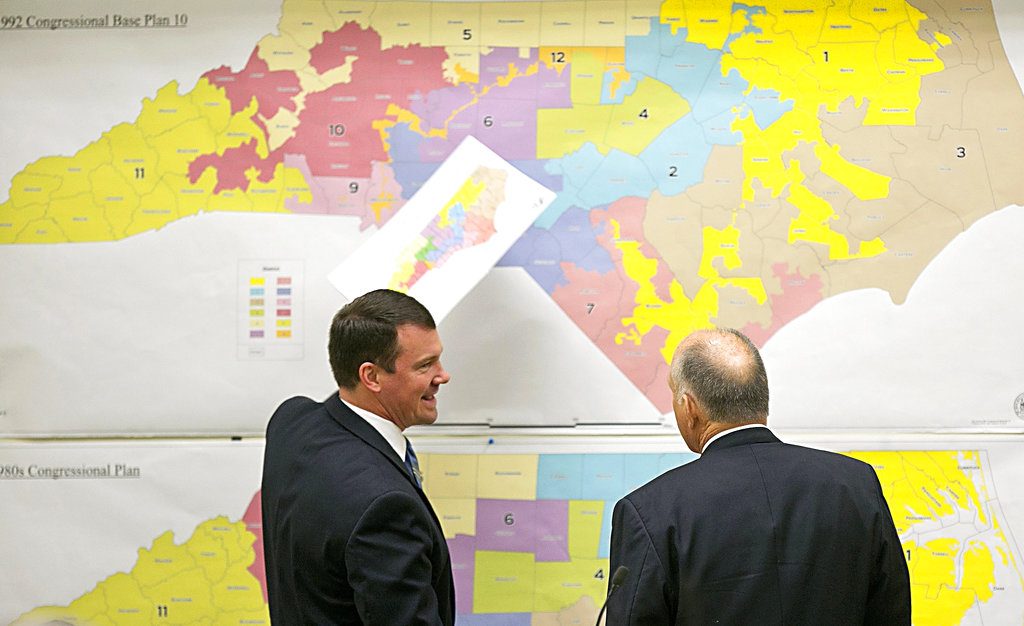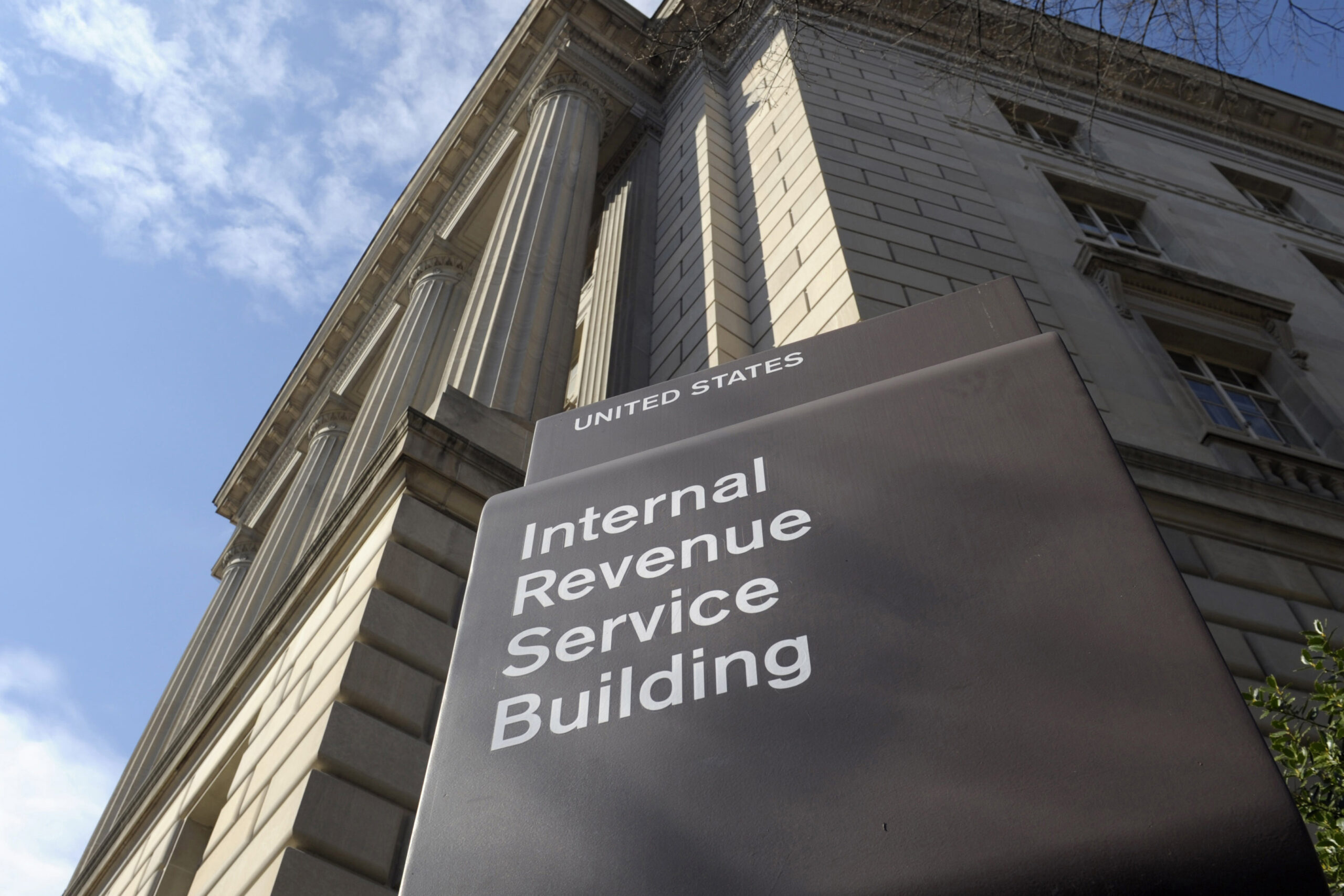Analysis indicates partisan gerrymandering has benefited GOP, leads to court case in Wis.
By: Associated Press//June 26, 2017//
Analysis indicates partisan gerrymandering has benefited GOP, leads to court case in Wis.
By: Associated Press//June 26, 2017//

By David A. Lieb
Associated Press
The 2016 presidential contest was awash with charges that the fix was in: Republican Donald Trump repeatedly claimed that the election was rigged against him, and Democrats accused the Russians of stacking the odds in Trump’s favor.
Less attention was paid to the possibility that manipulation occurred not during the presidential race but before it — in the drawing of lines for hundreds of U.S. and state legislative seats. Now a new analysis by the Associated Press has found that those machinations gave Republicans a real advantage.
The AP scrutinized the outcomes of all 435 U.S. House races and the roughly 4,700 state House and Assembly seats up for election last year using a new statistical method of calculating partisan advantage. It’s designed to detect cases in which one party may have won, widened or retained its grip on power through political gerrymandering.
The analysis found four times as many states with Republican-skewed state House or Assembly districts than Democratic ones. Among the two dozen most populated states that vote in the vast majority of seats in Congress, there were nearly three times as many with Republican-tilted U.S. House districts.
Historical battlegrounds such as Wisconsin, Michigan, North Carolina, Pennsylvania, Florida and Virginia were among those with significant Republican advantages in their U.S. or state House races. All had districts drawn by Republicans after the last Census in 2010.
The AP analysis also found that Republicans won as many as 22 additional U.S. House seats over what would have been in keeping with the average vote share in congressional districts across the country. That helped provide the GOP with a comfortable majority over Democrats instead of a narrow one.
Republicans held several advantages going into the 2016 election. They had more incumbents, which carried weight even in a year of “outsider” candidates. Republicans also had a geographical advantage because their voters were spread more widely across suburban and rural America instead of being highly concentrated, as Democrats generally are, in big cities.
Yet the data suggest that even if Democrats had turned out in larger numbers, their chances of substantial legislative gains were limited by gerrymandering.
“The outcome was already cooked in, if you will, because of the way the districts were drawn,” said John McGlennon, a longtime professor of government and public policy at the College of William & Mary in Virginia who ran unsuccessfully for Congress as a Democrat in the 1980s.
A separate statistical analysis conducted for the AP by the Princeton University Gerrymandering Project found that the extreme Republican advantages in some states were no fluke. The Republican edge in Michigan’s state House districts had only a 1-in-16,000 probability of occurring by chance; in Wisconsin’s Assembly districts, there was a mere 1-in-60,000 likelihood of it happening randomly, the analysis found.
The AP’s findings are similar to recent ones from the Brennan Center for Justice at the New York University School of Law, which used three statistical tests to analyze the 2012 to 2016 congressional elections. Its report found a persistent Republican advantage and “clear evidence that aggressive gerrymandering is distorting the nation’s congressional maps,” posing a “threat to democracy.” The Brennan Center did not analyze state legislative elections.
The AP’s analysis was conducted using a formula developed by the University of Chicago law professor Nick Stephanopoulos and Eric McGhee, a researcher at the nonpartisan Public Policy Institute of California. Their mathematical model was cited last fall as “corroborative evidence” by a federal appeals court panel that struck down Wisconsin’s state Assembly districts as an intentional partisan gerrymander in violation of Democratic voters’ rights to representation.
A dissenting judge ridiculed the Wisconsin ruling for creating a “phantom constitutional right” of proportional political representation. Wisconsin Attorney General Brad Schimel has argued on appeal that the ruling could “throw states across the country into chaos.”
Although judges have commonly struck down districts because of unequal populations or racial gerrymandering, the courts until now have been reluctant to define exactly when partisan map manipulation crosses the line and becomes unconstitutional. The U.S. Supreme Court has agreed to hear arguments on the Wisconsin case this fall. If upheld, it could greatly change the way legislative districts are drawn in the U.S. — just in advance of the next round of redistricting after the 2020 Census.
But if partisan gerrymandering “goes unchecked, it’s going to be worse — no matter who’s in charge,” said Sam Wang, director of the Princeton Gerrymandering Project.
‘PACKING’ AND ‘CRACKING’
Throughout U.S. history, Democrats and Republicans alike have been accused of drawing political districts in ways that favored their own interests.
It typically occurs in one of two ways:
—”Packing” a large number of voters from the opposing party into a few districts to concentrate their votes.
—”Cracking,” in which the majority party spreads the opposing party’s supporters out over more than one district to dilute their influence.
Another way of explaining it: When the party controlling the redistricting process sets out to draw lines, it has detailed information about the number of supporters the opposing party has, and where they live. It sets out to shape districts so its opponents’ votes are wasted — spreading them out in some places so they are unlikely to win, and compacting them in others so they have far more votes than they need for victory. Both methods allow the party already in power to turn its votes into a greater share of victories — or, put another way, to be more efficient with its votes.
The “efficiency gap” formula developed by Stephanopoulos and McGhee creates a way to measure whether gerrymandering has helped a political party enlarge its power.
The formula compares the statewide average share of the vote a party receives in each district with the statewide percentage of seats it wins, taking into account a common political expectation: For each 1 percentage point gain in its statewide vote share, a party normally increases its seat share by 2 percentage points. So a party that receives 55 percent of the statewide vote could expect to win 60 percent of the legislative seats.
GOP IN CONTROL
The current Republican supremacy in many states traces to the 2010 elections, when a GOP wave two years after Democrat Barack Obama was elected president allowed the party to grasp full control of 25 state legislatures and 29 governorships. That was just in time to carry out the mandatory duty of redistricting using the 2010 Census.
Since then, the Republican dominance has extended to 33 legislatures and 33 governorships, as well as both chambers of Congress and the presidency.
Acknowledging Republican dominance in many states, Democrats recently started an initiative that, led by former Attorney General Eric Holder and aided by Obama, is intended to better position the party for the redistricting process after the 2020 Census.
Their three-pronged approach will target important state races, support legal challenges of current maps and pursue ballot initiatives to change some states’ redistricting methods.
Holder says the goal is “to get to a more fair, more democratic system” than what he calls the current “rigged political process.”
Stephanopoulos and McGhee computed efficiency gaps for four decades of congressional and state House races starting in 1972, finding that the pro-Republican maps enacted after the 2010 Census resulted in “the most extreme gerrymanders in modern history.”
The AP used their method to calculate the efficiency gaps for all states that held partisan House or Assembly elections for all of their districts in 2016. North Dakota was excluded because it elected only half its House members, and Nebraska was left out because its legislative elections are officially nonpartisan.
In addition to Michigan, the analysis found a significant Republican tilt in South Dakota, Wisconsin and Florida, all of which had a Republican-controlled redistricting process after the 2010 Census.
Despite criticism of the process from minority parties, having control over the redistricting process doesn’t always guarantee success. Democrats were in charge of redistricting in Arkansas and West Virginia in 2011, and some Republicans grumbled at the time about partisan line-drawing. Yet Republicans subsequently swept to victory in both states, just as they had elsewhere in the South and throughout much of Appalachia.
The AP also calculated efficiency-gap scores for U.S. House elections, although experts warn that those measurements are less statistically meaningful in states with few districts.
“There are significantly more pro-Republican maps at the moment than there are pro-Democratic maps,” Stephanopoulos said. “To me, the most important driver of that fact is that Republicans controlled redistricting in a whole lot more states than Democrats” after the last census.
The national Republican State Leadership Committee, the force behind the party’s surge in state legislative elections, attributes its victories to candidates who better represent the values and issues important to their communities.
For Democrats to complain of gerrymandering is “pure nonsense,” said Matt Walter, the Republican committee’s president.
“That’s just a baseless supposition to blame that all on line-drawing,” he said.
Associated Press data journalist Meghan Hoyer also contributed to this report.
Legal News
- Waukesha man sentenced to 30 years for Sex Trafficking
- 12-year-old shot in Milwaukee Wednesday with ‘serious injuries’
- Milwaukee man convicted of laundering proceeds of business email compromise fraud schemes
- Giuliani, Meadows among 18 indicted in Arizona fake electors case
- Some State Bar diversity participants walk away from program
- Wisconsin court issues arrest warrant ‘in error’ for Minocqua Brewing owner
- Iranian nationals charged cyber campaign targeting U.S. Companies
- Facing mostly white juries, are Milwaukee County defendants of color truly judged by their peers?
- Milwaukee Mayor speaks in D.C. Tuesday at White House water summit
- Chicago man sentenced to prison after being caught with ‘Trump Gun’
- FTC bans non-competes
- Gov. Evers seeks applicants for Dane County Circuit Court
WLJ People
- Power 30 Personal Injury Attorneys – Russell Nicolet
- Power 30 Personal Injury Attorneys – Benjamin Nicolet
- Power 30 Personal Injury Attorneys – Dustin T. Woehl
- Power 30 Personal Injury Attorneys – Katherine Metzger
- Power 30 Personal Injury Attorneys – Joseph Ryan
- Power 30 Personal Injury Attorneys – James M. Ryan
- Power 30 Personal Injury Attorneys – Dana Wachs
- Power 30 Personal Injury Attorneys – Mark L. Thomsen
- Power 30 Personal Injury Attorneys – Matthew Lein
- Power 30 Personal Injury Attorneys – Jeffrey A. Pitman
- Power 30 Personal Injury Attorneys – William Pemberton
- Power 30 Personal Injury Attorneys – Howard S. Sicula











